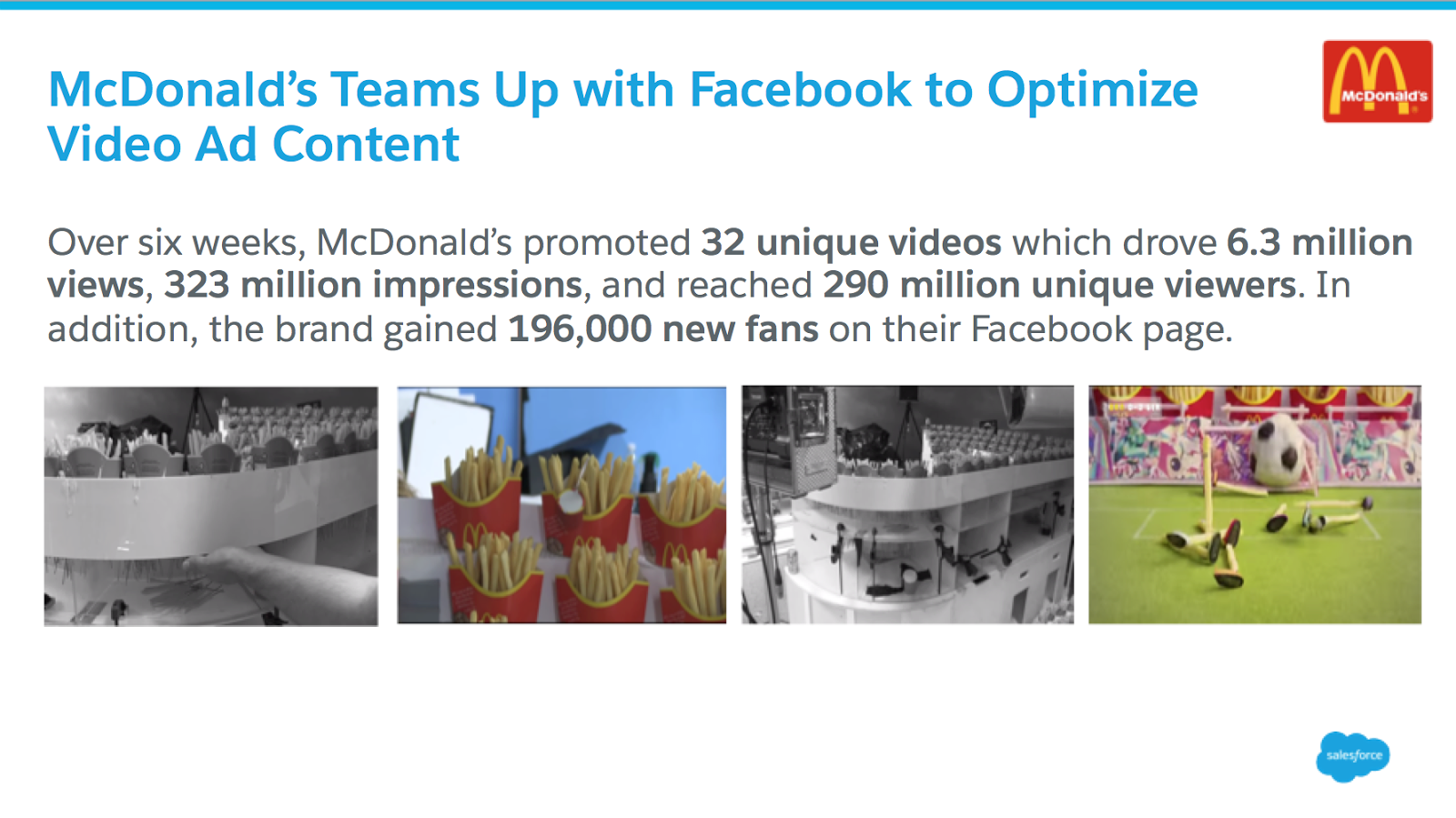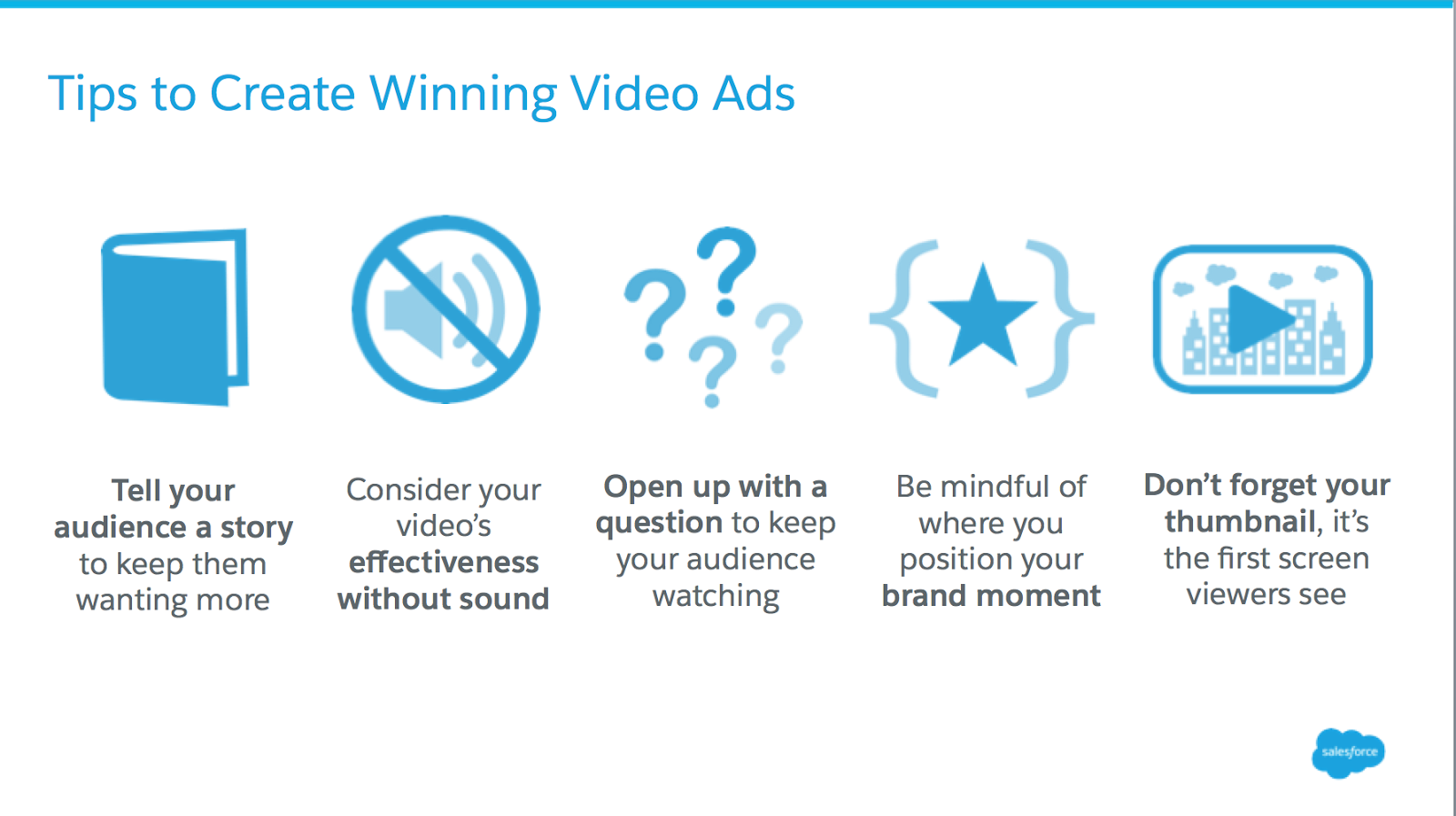
Get your FREE 30-day trial.
Please complete all fields.
If there’s one trend advertisers and brands should not ignore, it’s digital video advertising. According to Inc., after watching branded video content, a consumer is 85% more likely to purchase a product or service. In addition, they found that posts including a video acquire 3x more clicks than text-only posts. A recent study by Nielsen found that even if a viewer sees only a portion of a video ad, they were positively affected by that brand. Viewers who saw less than three seconds of an ad made up 47% of total campaign value, and those who watched less than 10 seconds made up 74%. Platforms like Facebook and Twitter are seeing growing success with video content. Today, Facebook sees over four billion video views per day, when last year that number was one billion. Among Twitter users, 82% watch video content in the platform.
However, simply uploading a video ad doesn’t mean it will be watched. It takes a well-crafted video ad to compel viewers to watch and take action, whether that is to make a purchase, sign-up for an event, or book a vacation. There are numerous creative decisions advertisers should consider in creating video ad campaigns, in order to effectively attract viewers and reach advertising objectives. The length of time, placement of main ad message, sound, and imagery all require thoughtful planning in crafting a video ad. In this post, you will learn how McDonald’s excelled in advertising by carefully crafting its video advertising campaigns. Then you can read some tips and tricks to help you in your next (or possibly first) digital video campaign.
McDonald's is one of many brands that’s realized the power in creative optimization of video ad campaigns. Last year, McDonald’s launched a European Facebook video ad campaign focused around the 2014 World Cup, to drive global brand awareness in partner with Salesforce and OMD. By creating highly-targeted audiences segmented based on the various teams, McDonald’s was able to create dynamic content that engaged fans on a massive scale.
During the World Cup, McDonald’s produced at least one new 15 or 30 second video per night, using a “handcrafted” look and feel that captured the key moments of that day’s matches. Each day, the creative team met at 5:00 PM, and began shooting by 11:00 PM. By 6:30 the next morning, the ads were with McDonald’s legal and corporate marketing for final approval. Over six weeks, McDonald’s promoted 32 unique videos which drove 6.3 million views, 323 million impressions, and reached 290 million unique viewers. In addition, the brand gained 196,000 new fans on their Facebook page.
By carefully considering the brand moments and creative specifications that would appeal to each demographic targeted, McDonald’s succeeded in one of it’s biggest social advertising campaigns in history.

1. Story Time! Consider how a movie trailer attracts viewers to keep watching versus a television commercial. Trailers use storytelling to intrigue and engage the audience. Create a video ad narrative that takes the viewer through a story, and avoid just another sales pitch for a product or service. For example, Kiwi Crate delivers innovative learning experiences for kids in science and art literally in the form of a Crate. With the help of Facebook, Kiwi Crates launched 10-15 second video ads that show kids opening up their Kiwi Crate and playing with its contents, demonstrating to the viewer all the fun kids can have by receiving the product. From this campaign, they saw a 23% increase in subscription orders and a 2.8x return on ad spend.
2. I Didn’t Hear You, What Did You Say? Facebook videos autoplay without sound. This means it’s crucial to consider your video’s effectiveness with the sound turned off. Look to beautiful imagery and text to help craft your video, and let sound simply boost your video’s performance if listened to. Hotels.com created a video ad campaign that has fun with the autoplay nature of Facebook videos. The brand’s spokesman, Captain Obvious, is shown playing the piano with text confessing he has no idea how to play the piano, but until you activate the sound you don’t realize all he’s playing is chord after chord of random notes -- and not well I may add.
3. Why Should You Watch This Video? Open up with a question that focuses your target audience by addressing their needs/questions or providing value to a specific set of users. For example, in the first few seconds of a video ad, an automotive advertiser could ask viewers “Is it time for a new car?” This first moment addresses a target audience and aims to attract interested viewers and future car buyers to keep watching the video.
4. Let’s Cut to the Chase. When designing video creative, marketers should be mindful of where that creative will be viewed before crafting a video and positioning their central brand moment. Facebook recently conducted a study between digital video ads and their corresponding TV advertisements, to examine the effectiveness of a digital video ad optimized for mobile and other devices, rather than running the same ad used for television. The study found that digital video content that is optimized for mobile by taking short clips or imagery from just the key brand moments of a longer TV ad was much more successful and in addition primed people who later saw a TV ad for the same brand when compared to just using the same TV ad on Facebook.
5. Don’t Neglect the Thumbnail. Often the first thing viewers see is a video’s thumbnail or still screen. Choose a shot that best highlights your video’s message or key brand moment. For example, if an outdoors brand called Northern Trail Outfitters is launching a video campaign to promote its new cold-weather proof tents, a thumbnail of a tent set in a snow-covered scene would best convey the video’s message.

To learn more about McDonald’s successful video advertising campaign powered by Salesforce, check out the full case study here.